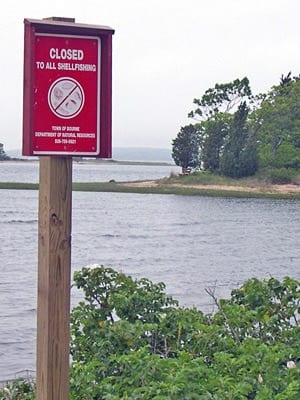Watch What You Eat
Harmful Algal Blooms (HABs) can take a variety of forms, each with a distinct and disturbing impact on human health.
Shellfish poisoning
Most shellfish filter seawater for food. As they eat, they sometimes consume toxic phytoplankton and the algal toxins accumulate in their flesh. The level of toxins can reach a threshold where they become dangerous—sometimes lethal—to humans and other animals, though not to the shellfish themselves. Shellfish poisoning syndromes can cause gastrointestinal and neurological problems, from nausea, vomiting, and incapacitating diarrhea to dizziness, disorientation, amnesia and permanent memory loss, and paralysis. Some syndromes are lethal.
Ciguatera fish poisoning
Species of the genus Gambierdiscus living in tropical waters (particularly coral reef communities) are known to produce a fat-soluble toxin that causes diarrhea, vomiting, and abdominal pain, followed by muscular aches, dizziness, anxiety, sweating, and tingling sensations. Ciguatoxin-producing algae live attached to seaweeds, and they are first consumed by plant-eating reef fishes. Those fish are in turn eaten by larger carnivorous, commercially valuable finfish. The toxin, being fat soluble, is transferred and magnified through the food chain, much as occurs with pollutants such as DDT and PCBs. That means the most dangerous fish to eat are the largest, oldest, and most desirable. Ciguatera is responsible for more human illnesses—10,000 to 50,000 cases annually—than any other kind of toxicity originating in fresh seafood.
Possible Estuary-Associated Syndrome
This vague term reflects the poor state of knowledge of the human health effects of the alga Pfiesteria piscicida and related organisms. Human exposure to these algae in estuaries has been linked to deficiencies in learning and memory, skin lesions, eye irritation, and acute respiratory distress. In 1997, a bloom of Pfiesteria caused massive fish die-offs on Maryland’s eastern shore, leading consumers to avoid all seafood from the region despite assurances that no toxins had been detected in seafood products. That single event cost at least $50 million in lost seafood sales and lost revenues for recreational boat charters.

